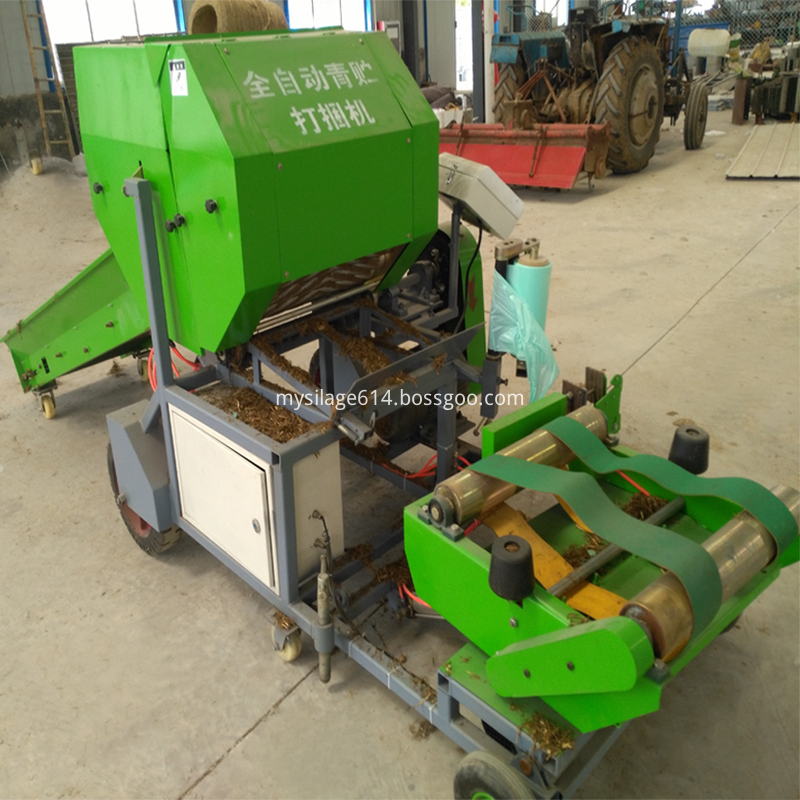Four notes for self-made compound feed
Specifications of bale machines:
Machine Size: Length 3050mm*Width 1650mm*Height 1550mm
Machine Weight: 600kg
Conveyer Belt Power Motor: 0.55kw
Baler Power Motor: 5.5kw
Film Wrapper Power Motor: 400w
Bale Efficiency: 6-8Tons/Hour
Bale Size: 550mm*550mm
Bale Weight: 70-90kg
Bale Film Layer: 2-4layers
semi-automatic bale machine, small bale machine for grass, farm used baler for packing Zibo Maoyang Industry and Trading Co.,ltd , http://www.mysilage.com
When raw materials are to be formulated and mixed feeds are used, the raw materials must not be less than 4 in general. Only a certain amount and type of raw materials can be combined to achieve mutual complementarity between nutrients and improve the utilization of feed. Self-made compound feeds should generally be prepared with sufficient raw materials: energy feeds such as corn, dried sweet potatoes, sorghum, etc.; protein feeds such as fish meal, bean cakes, peanut cakes, rapeseed cakes, cottonseed cakes, etc.; mineral feeds such as bone meal, shell powder , stone powder, salt, etc.; bran feed, such as bran, sweet potato powder, peanut meal, etc. The raw materials used need to be fresh, non-toxic, non-deteriorating, good palatability, and have no adverse impact on the quality of livestock and poultry products. For certain toxic feeds such as rapeseed cakes, cottonseed cakes, etc., they must be detoxified before use.
Standards for appropriate breeding standards are based on a large number of repeated scientific tests and production verification results. For livestock of different species, sex, age, weight, production use, and production level, energy, protein, and vitamins for each poultry are specified for each day. The supply of nutrients such as minerals. When rearing households with self-provisioned feed, they should choose appropriate breeding standards according to the specific conditions of the livestock and poultry they support. According to production practice, in pigs and chickens compound feed, the proportion of various types of feed: energy feed 55% ~ 65%, protein feed 10% ~ 20%, mineral feed 1% ~ 7%, salt 0.3% ~ 0. 5%, wheat bran, sweet potato meal feed 10% to 30%.
With a reasonable feed additive is to add a variety of amino acids in the feed, vitamins, minerals and antibacterial agents. There are two commonly used categories: one is a nutritional feed additive, which includes amino acids, vitamins, and trace element additives. Its role is to supplement nutrient deficiencies in feed. One is to promote metabolism, antibacterial agents, hormones, insect repellents, and Chinese herbal medicine feed additives, etc. Its role is to stimulate the growth of livestock and poultry, improve the utilization of feed and the production capacity of livestock and poultry, and prevent diseases. Professional households must be properly selected according to their needs and strictly follow the instructions for use.
